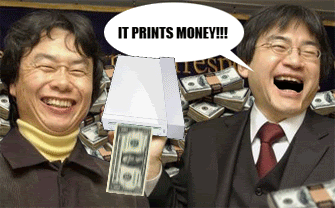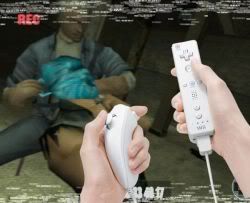Nintendo Wii Supply Shortages

Background: The Nintendo Wii has been constantly selling out everywhere since its debut in November of 2006. At the same time, the system has also been supply constrained in every major retailer in the country, essentially since launch day.
The Controversy: Many have speculated that the relatively static supply amounts have, in fact, helped Nintendo generate additional buzz and mainstream media coverage of the Wii. Just look at how quickly demand can rise for a consumer electronic device when they're impossible to find. Yet, it's hard to believe Nintendo is having trouble ramping up production on technology that is so conventional, for so long a period of time. Neither the accelerometer, infrared detection, GPU or CPU components are expensive or necessarily difficult to manufacture. So what's keeping these things from reaching store shelves?
The Conspiracy Theory: Nintendo, in an effort to raise public awareness of their new console, have intentionally kept supply relatively constant. By keeping a tight control over the retail channel, they are limiting units in order to create an air of intrigue to reach the common household, and their target demographic.. Aged 8 months to 80 (minus the 18 - 35 range, or anyone with an HDTV).
Verdict: Somewhat likely. If Sony were towing the "Our supply can't meet the demand" line, we'd understand. Blu-ray diodes are tight right now, and we know production will ramp up eventually. But this is definitely not the case, so something is obviously going on. Iwata, stop printing money and spill the beans!
The Rockstar/ESRB Deal

Background: In June, 2007, Rockstar's controversial sequel, Manhunt 2, received an AO-rating by the ESRB (which for the industry, is a mark of death, much like the NC-17 rating is for movies). The original, which involved a released death row inmate killing people in grotesque ways, was given an M-rating (essentially an R rating for movies) and early previews have indicated that this next game contains about the same level of violence as it's predecessor.
The Controversy: At first glance, it appears to be nothing more than a knee-jerk reaction to a developer known for controversial titles like Grand Theft Auto, almost akin to a Rasheed Wallace effect. This is evidenced by judging the public's reaction to Rockstar's previous PS2 game, Bully, which was perceived as encouraging bullying, but in reality put you in much the opposite role. Some also thought the Wii version's violent gestures were to blame for the AO-rating, but the official reports indicate that none of the Wii controls were taken into account (which of course could silently be the actual reason).
The Conspiracy Theory: The ESRB and Rockstar completely engineered the Manhunt 2 controversy. On the one hand, it makes the ESRB look strong and competent. Then, when Rockstar takes a month or two to tweak a few lines of code, they release an M-rated version of essentially the same game. Rockstar manages to get a whole lot of extra press and the ESRB remains happy, and (after a short delay) we get to strangle people like a psychopath using our Wii-mote and nunchuk. Now that's "Win-Win-Win!".
Verdict: Unlikely. As great a story as this would have been in corporate espionage drama, Rockstar seems like the last company in the industry to give into such demands.
Stay tuned for Part 2..
Video Game Conspiracy Theories Index



No comments:
Post a Comment